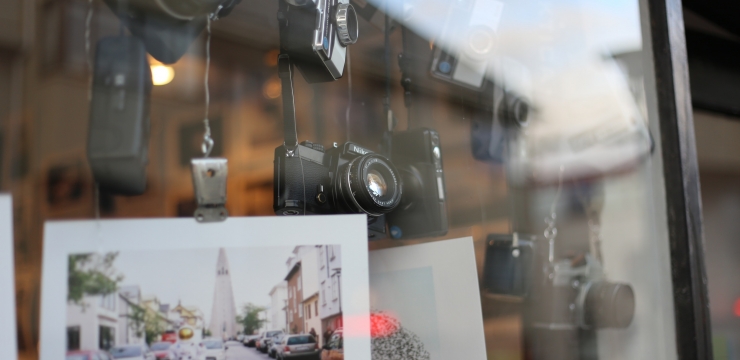Our online experience has, overwhelmingly, become a visual experience dominated by the power of images and video. An image, in particular, is a powerful communication medium. Images are highly emotional and engaging. They affect us profoundly. Just consider this recent image that has become an icon of protest action in the United States:
The moments before the Baton Rouge photo
This image has become an iconic image of the protests of members of the African American community against police brutality in recent weeks. It was taken in Baton Rouge, Louisiana and spread virally across the Web. It is also a clear demonstration of the power of images. In his article for The Atlantic titled “A Remarkable Photo of a Protestor in Baton Rouge, Louisiana”, Yoni Appelbaum expressed what made this image so powerful:
There are images that are impossible to forget, searing themselves into our collective consciousness. One man staring down a column of tanks in Tiananmen Square. A high school student attacked by police dogs in Birmingham, Alabama. This is such a photo.
Once seen, it cannot be unseen.
Why publishers should leverage the power of images
The challenge for publishers is to aim to evoke similar emotions with images used on their websites. Obviously, not every image on a website will be so powerful that, “[o]nce seen, it cannot be unseen” but publishers have an opportunity to choose images that will stand out and attract attention.
Images have become the primary means of communication. While video is certainly on the rise, images capture our attention and evoke emotions instantly. As J Francis Dave wrote in his article titled “Power of Images: Creating the Myths of Our Time”:
Images. They are so compelling that we cannot not watch them. They are so seductive that they have revolutionized human social communication. Oral and written communication are in decline because a new form of communication, communication by image, has emerged.
Why images are so engaging
In his report titled “How Long Do Users Stay on Web Pages?”, Jakob Nielsen emphasized the importance of communicating your “value proposition” within 10 seconds because, after that, consumers’ attention will drift. Compelling images are a great way to hold consumers’ attention long enough for them to not only remain on your site but take the time to engage more with your site.
Images are timeless and capture our imaginations in moments. They can hold our attention. We are a highly visual species. Roughly 90% of the information our brains receive from our senses is visual and we can process visual information 60,000 times faster than text.
Neil Patel published an article in the HubSpot blog titled “8 Data-Driven Tips for Using Images in Blog Posts” that drives home the importance of images. Although his article focuses on blog posts, the same principles apply to digital content, generally.
Patel highlighted a phenomenon called the “picture superiority effect” which Digital Splash Media explained in this short video:
According to Wikipedia’s explanation:
The picture superiority effect refers to the phenomenon in which pictures and images are more likely to be remembered than words. This effect has been demonstrated in numerous experiments using different methods. It is based on the notion that “human memory is extremely sensitive to the symbolic modality of presentation of event information”. While explanations for the picture superiority effect are not concrete, they are still being debated.
Tips for better converting images
What this means for publishers is that engaging images will not only capture consumers’ attention, they will also be far more memorable than text. This underscores the tremendous power of images as an advertising medium and why image-based advertising solutions such as content recommendation and in-image are so effective. As Miles Technology put it in its contribution to the #semrushchat:
@semrush A1: Visuals trigger reactions and tell a story. #semrushchat
— Miles Technologies (@milestech) April 27, 2016
Erez Zundy wrote a post for us titled “How Images Help You Convert” in which he shared a number of valuable insights into what makes effective images so engaging. Here are his top 3 tips:
- Choose images with great “luminance contrast” (or color contrast relative to other elements on the page) because they stand out more and tend to attract readers’ attention quicker.
- Make your images stand out more by leaving plenty of space around their margins. Also, choose images with relatively simple subjects (as opposed to very “busy” features that clutter the image).
- Stock photos and artwork is great but images of real people convert better.


Interesting